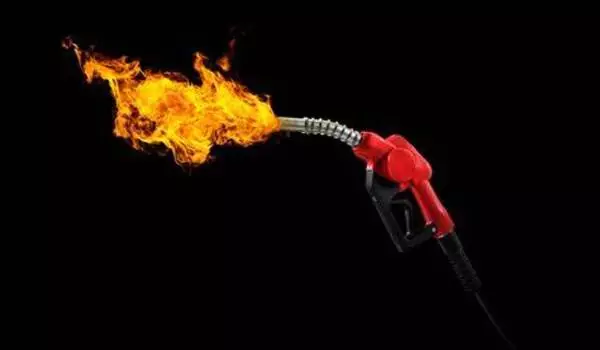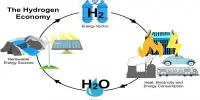Fire-safe fuel research frequently focuses on developing materials that are less prone to combustion or that may suppress fires more efficiently. Chemical engineers have created a fuel that can only be ignited by applying an electric charge. It is a ‘safe’ liquid fuel since it does not react to flames and cannot ignite accidental fires during storage or transport.
Chemical engineers at UC Riverside have created a fuel that can only be ignited by applying an electric charge. It is a “safe” liquid fuel because it does not react to flames and cannot ignite accidental fires during storage or transit.
“The fuel we usually use is not particularly safe. It evaporates and has the potential to ignite, and it’s difficult to stop,” said Yujie Wang, a UCR chemical engineering doctorate student and co-author of a recent article about the fuel. “It is much easier to control the flammability of our fuel and stop it from burning when we remove voltage.”
The study published in the Journal of the American Chemical Society reveals how the scientists developed the fuel, and additional technical information is provided in the patent they filed.
The fuel we usually use is not particularly safe. It evaporates and has the potential to ignite, and it’s difficult to stop. It is much easier to control the flammability of our fuel and stop it from burning when we remove voltage.
Yujie Wang
When fuel combusts, it is not the liquid itself that burns. Instead, it is the volatile fuel molecules hovering above the liquid that ignites on contact with oxygen and flame. Removing an oxygen source will extinguish the flame, but this is difficult to do outside of an engine.
“When you strike a match in a pool of gasoline on the ground, the vapor of the gas burns. “You can smell the vapor and immediately know it’s volatile,” said Prithwish Biswas, a UCR chemical engineering PhD student and the paper’s first author. “If you can control the vapor, you can control whether the fuel burns.”
The new fuel is based on an ionic liquid, which is a type of liquified salt. “It is similar to the salt we use to flavor food, which is sodium chloride,” Wang went on to say. “The one we used for this project has a lower melting point than table salt, low vapor pressure, and is organic.”

Once in the lab, the researchers changed the formula of the ionic liquid, replacing chlorine with perchlorate. They then lit the resulting liquid with a cigarette lighter to test if it burned. “The temperature from a normal lighter is high enough, and if it was going to burn, it would have,” Wang went on to say.
The scientists next attempted applying voltage followed by a lighter flame, which did ignite. “Once we shut off the current, the flame was gone, and we were able to repeat that process over and over again — applying voltage, seeing smoke, lighting the smoke so it burned, then turning it off,” Wang went on to say. “We were excited to find a system we could start and stop very quickly.”
Increasing the voltage in the liquid produced greater flames with more energy output. As a result, the technique might function similarly to a metering or throttling system in an engine.
“You can measure the combustion in this way, and cutting the voltage works like a dead man switch – a safety feature that automatically shuts down a machine if the operator becomes incapacitated,” said Michael Zachariah, distinguished professor of chemical engineering at UCR and lead author of the paper.
Theoretically, the ionic liquid fuel could be used in any type of vehicle. However, there are still questions that need to be answered before it could be commercialized. The fuel would need to be tested in various types of engines, and its efficiency would need to be determined.
The ionic liquid has an interesting quality in that it may be blended with normal gasoline and still behave the same way it does on its own. “But there needs to be additional research to understand what percentage can be mixed and still have it be not flammable,” Zachariah went on to say. Though there are other areas for further investigation on the liquid, the team is thrilled to have created a fuel that is safe from unintentional fires.
“This would undoubtedly be more expensive than the current method of producing fuels.” These chemicals are not typically manufactured in large quantities, but if they were, the cost would be reduced,” Zachariah explained.
















